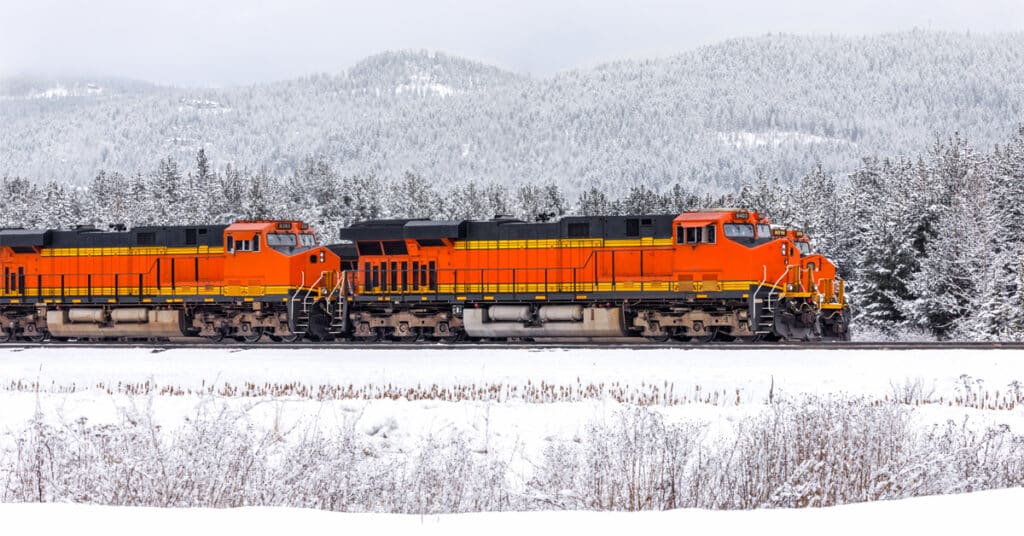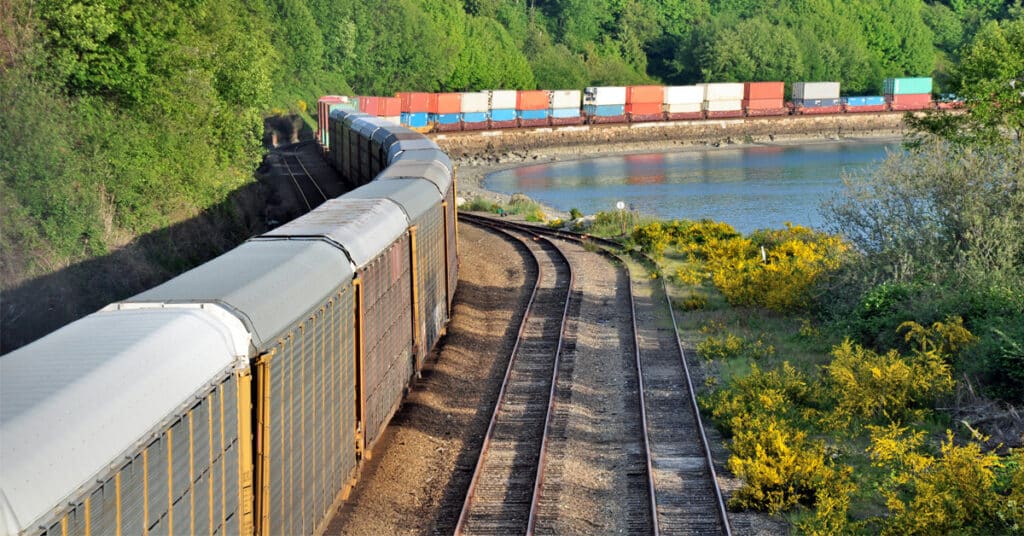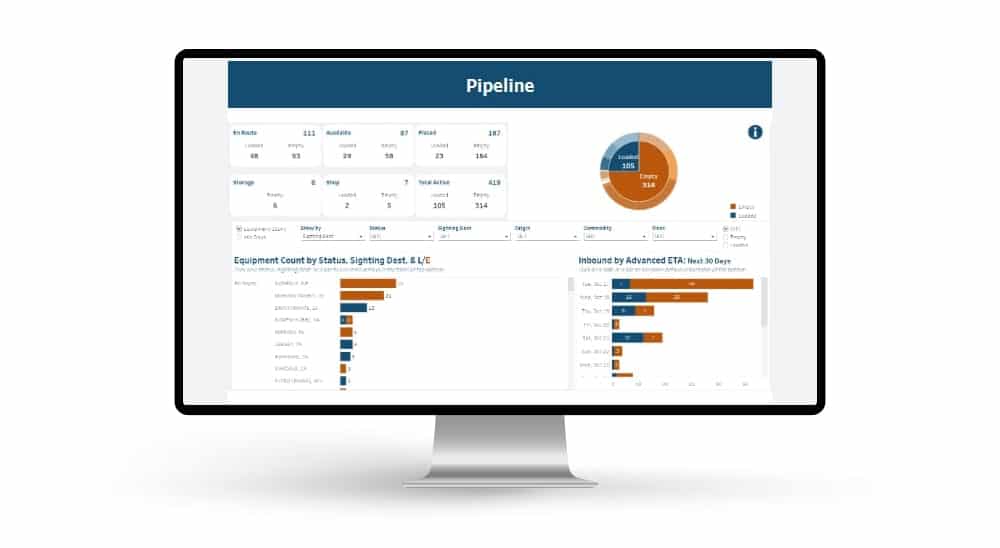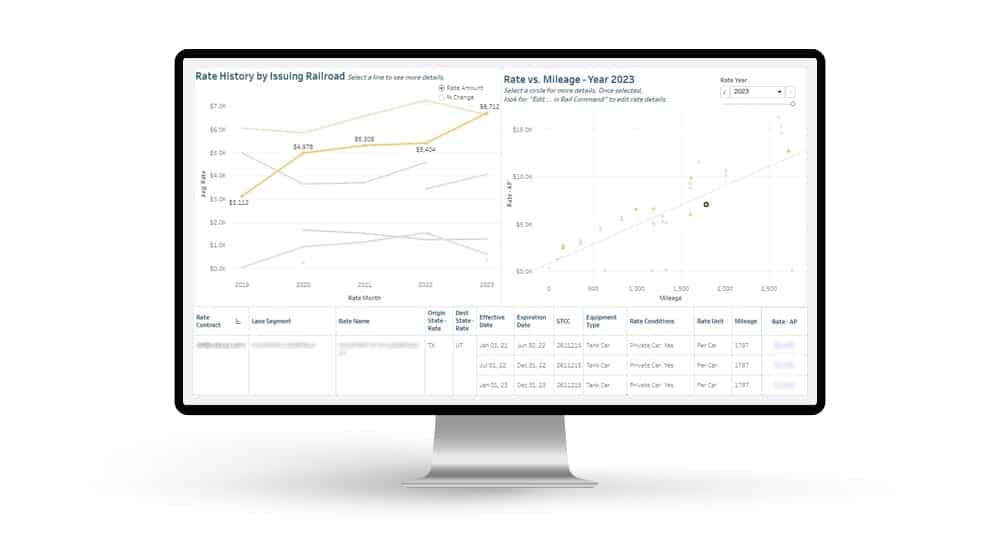In the ever-evolving rail shipping industry, businesses face myriad challenges. One prominent challenge is managing and improving rail freight shipping.
In this blog we’ll take a look at three common reasons that businesses’ rail freight shipping strategy isn’t working – and what to do about that. First we’ll take a look at how inefficient planning and scheduling can impact your bottom line. Then we’ll transition into how rising costs, like demurrage or rail rates, can eat into your profits if you don’t manage them. And lastly, we’ll examine how neglecting versatile methods of rail shipping can see you missing out on opportunities for flexibility.
#1: Improving Freight Strategy through Efficient Planning and Scheduling
Understanding how to optimize planning and scheduling plays a vital role in improving your rail freight shipping.
Impacts of Inefficient Planning:
Poor planning can cause a domino effect:
Backlogged Tasks
Backlogged tasks can cripple your operations, causing delays and slowdowns. These slowdowns clog yards, disrupt schedules, and delay deliveries.
For instance, backlogged tasks due to poor planning and coordination can cause operational bottlenecks and lead to critical slowdowns in freight movement. Poor planning can cause car bunching and yard congestion, adversely impacting overall transit time and putting a strain on the entire operation, delaying deliveries, and disrupting the supply chain.
Missed Deadlines
Missed deadlines affect more than your schedule. They disrupt customer relations. Trust is lost, losing business follows, and costs to re-acquire those customers soar.
It’s not about missing delivery just once; the cumulative effect of delays can strain the relationship with customers. Lost trust leads to lost business, and replacing a lost customer can cost up to five times more than retaining a current one.
Poor planning in freight operations does have lasting implications. But there are solutions.
Strengthening Planning and Scheduling:
Optimize your operations with:
Logistics Software
One of the ways to mitigate the issues associated with inefficient planning and scheduling is by leveraging modern logistics software that enhances your scheduling process. Integrated digital tools can provide a complete view of the supply chain, enabling more intelligent rail shipping, real-time adjustments, and reducing the need to schedule truckloads to replace delayed railcars.
For instance, software like RSI Logistics’ Rail Command provides a comprehensive view of your supply chain. You can strategically plan your shipments and make real-time adjustments based on data-driven insights.
Predictive Analytics
Predictive analytics is another critical tool that can significantly enhance planning and scheduling operations. By accurately anticipating needs based on historical data and forecasting, businesses can optimize resource allocation, avoiding underutilization or over-shipping. This use of data analysis not only makes the logistics process more efficient but also reduces waste and boosts profitability.
Sensor data from trains and railcars, combined with AI-powered analytics, can provide actionable insights that can predict potential bottlenecks or disruptions and thus enable more effective planning and scheduling.
#2: Improving Freight Strategy by Managing Rising Costs
Rising costs, such as demurrage charges or rates, considerably affect operations in the rail freight industry. Understanding these charges and how to control them is crucial to improving your rail freight shipping.
Implications of Rising Costs:
The escalation of costs like demurrage or freight rates can lead to significant financial burdens:
Increased Demurrage Charges:
Excessive demurrage charges can direly impact your cost structure.
For instance, delays in loading and unloading cargo, resulting in railcars spending excessive durations on customer sidings, can lead to elevated demurrage charges from the railroads. These unexpected expenses can inflate operational costs and eat into your profit margins.
Escalated Freight Rates:
Rising freight rates can upheave budget forecasts and strain relationships with customers.
Higher rates mean increased cost of freight transportation, potentially leading to higher prices for customers. This sudden rise can strain customer relationships and potentially drive them towards cheaper alternatives.
Controlling these rising costs requires careful strategy and the right tools in place.
Strategies for Mitigating Costs:
Here’s how you can control these escalating charges:
Negotiating Rates:
Skillful negotiation with railroads can play a crucial role in controlling freight costs.
Before agreeing to any rate hikes, discuss these with your railroad representatives. You may be able to negotiate rates, adjust shipping routes, or at least gain a comprehensive understanding of any cost increases.
Streamlining Operations:
Optimizing your processes can help reduce demurrage charges.
For example, use software like RSI Logistics’ Rail Command to gain a clear view of your railcar utilization and storage. This helps in avoiding holding railcars longer than necessary and thus reduces demurrage charges.
Leveraging Data:
Harness the power of rail data to foresee and plan your freight movements effectively.
By using data-driven insights, you can optimize your planning and forecasting and manage your railcar inventory efficiently, helping mitigate the risk of inflated demurrage costs.
While escalating charges like demurrage and freight rates are challenges you’ll encounter, effective strategies can help in controlling these without compromising your operations.
#3: Improving Freight Strategy by Considering Versatile Transportation Methods
In the rail freight industry, the failure to consider and utilize versatile transportation methods can constrict growth and impede efficiency.
Consequences of Overlooking Complementary Transportation Methods:
Overdependence on a single transportation mode can bring about constricted flexibility and potential underutilization:
Restricted Transport Flexibility:
Total reliance on direct one mode can limit your transport flexibility.
For instance, being solely dependent on direct rail transportation might limit your flexibility to react to sudden changes or disruptions. Any hitches on the rail network would directly impinge on your operations, making it more difficult to swiftly adjust or modify transport plans.
Underutilization of Multimodal Transport:
Discounting the potential of multimodal transport can lead to missed opportunities to adapt to market dynamics.
For example, by neglecting the integration of other transportation modes like transloading to truck for final mile, you might be missing out on the chance to ensure smoother freight movement or the ability to service customers who are not rail served.
However, these constraints can be worked around with careful planning and strategic utilization of available options.
Strategies to Diversify Transportation Methods:
Consider the following to balance and diversify your transportation methods:
In-depth Evaluation:
Identifying the potential benefits of incorporating transloading into the operational system through thorough evaluation.
For example, conducting a comprehensive examination of your current operations can reveal potential areas where integrating transloading can lend benefits. Transloading, the process of transferring freight from one mode of transport to another, offers opportunities for increased flexibility, enhanced reach, and reduced freight spend on long-haul trucking.
Data-Driven Decision Making:
Optimize the selection and management of multi-modal transport pathways by focusing on data-driven decision-making.
Utilize the power of data to get insightful information on the efficiencies and potential cost savings of different transport modalities. For instance, analyzing historical transport data related to cost, time, and performance can help in identifying optimal multi-modal transport pathways, which could provide a significant edge in a rapidly shifting market.
Professionals operating in this industry should be focusing on improving their rail freight shipping. Undertaking a rigorous analysis of common challenges is not only a requisite to resolve pain points but also essential for ensuring profitable growth.
Three prevalent issues – inefficient planning and scheduling, rising costs like demurrage or freight rates, and neglecting versatile forms of transportation – each contribute significantly to reduced operational efficiency. As we’ve explored, the utilization of contemporary logistics software, data-driven decision making, effective negotiation strategies, and adopting a multi-modal approach can mitigate these issues.
Harnessing modern technologies and applying data analysis can yield operational improvements, enhance performance, and give you a competitive edge in this fast-paced industry. By addressing these problems, companies can improve rail freight operations, thereby reducing costs and enhancing customer satisfaction.
Remember, the key lies in implementing these strategic measures effectively and continuously monitoring, reviewing, and fine-tuning them to align with ever-evolving industry dynamics. As the saying goes, ‘knowledge is power’, so let the insights from this blog guide you on your journey to operational excellence in the rail shipping industry.




 Automated exception reporting of the railcar tracking data makes it easy to identify and troubleshoot jeopardized shipments, thereby enabling you to provide better service to your stakeholders.
Automated exception reporting of the railcar tracking data makes it easy to identify and troubleshoot jeopardized shipments, thereby enabling you to provide better service to your stakeholders. Receive notification of pending rate expirations. Tariff changes and fuel surcharges can be automatically updated.
Receive notification of pending rate expirations. Tariff changes and fuel surcharges can be automatically updated.